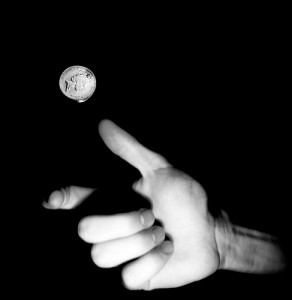A common way to cut through the clutter of the decision is to simply flip a coin. Some times a coin toss is a great way to decide something – especially when any of the choices are beneficial or of low risk.
Another common way to deal with this situation is to collect more data and hope that leads to an obvious solution. Of course, the decision can become even harder when the extra information points out problems with all of the possible solutions. This is often the first step into the quagmire known as analysis paralysis.
One of my mentors in the advertising industry had a great technique for putting a limit on the amount of data collection or analysis that went into a decision. She would estimate the cost of the decision and then allow herself to spend up to half the cost in time and effort to make the decision.
To provide an example, let’s say you are making a decision on which scanner to purchase for the office (an item that would cost between $100 and $300). She would first average the expected cost ($150 in this case) and then she would allow herself to spend no more than $75 in staff time or research costs to make the decision.
Her belief was that too much time was being wasted on making small decisions (that had a limited impact on the organization) and not enough effort was going into the major decisions which could harm or benefit the organization for years.
Through the years since learning this technique, I have used it hundreds of times and always find it helps me break out of analysis paralysis.
What strategies do you have for making tough decisions or for avoiding analysis paralysis? Please share them in the comments.

